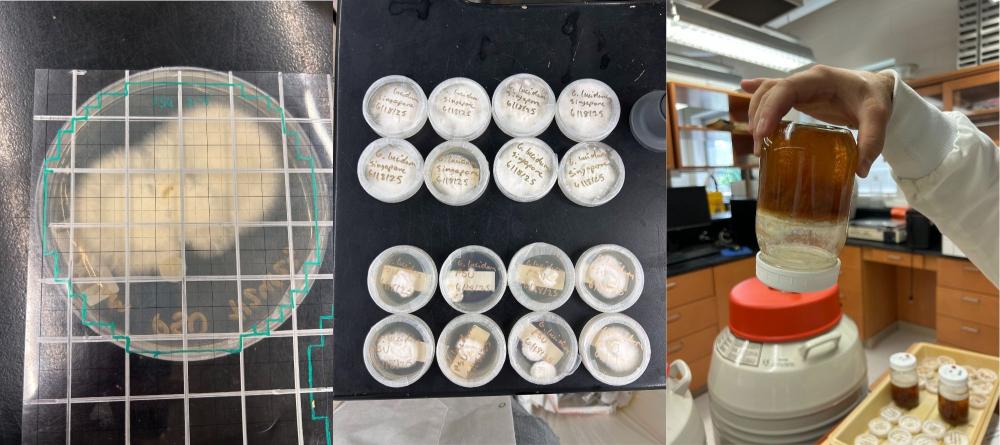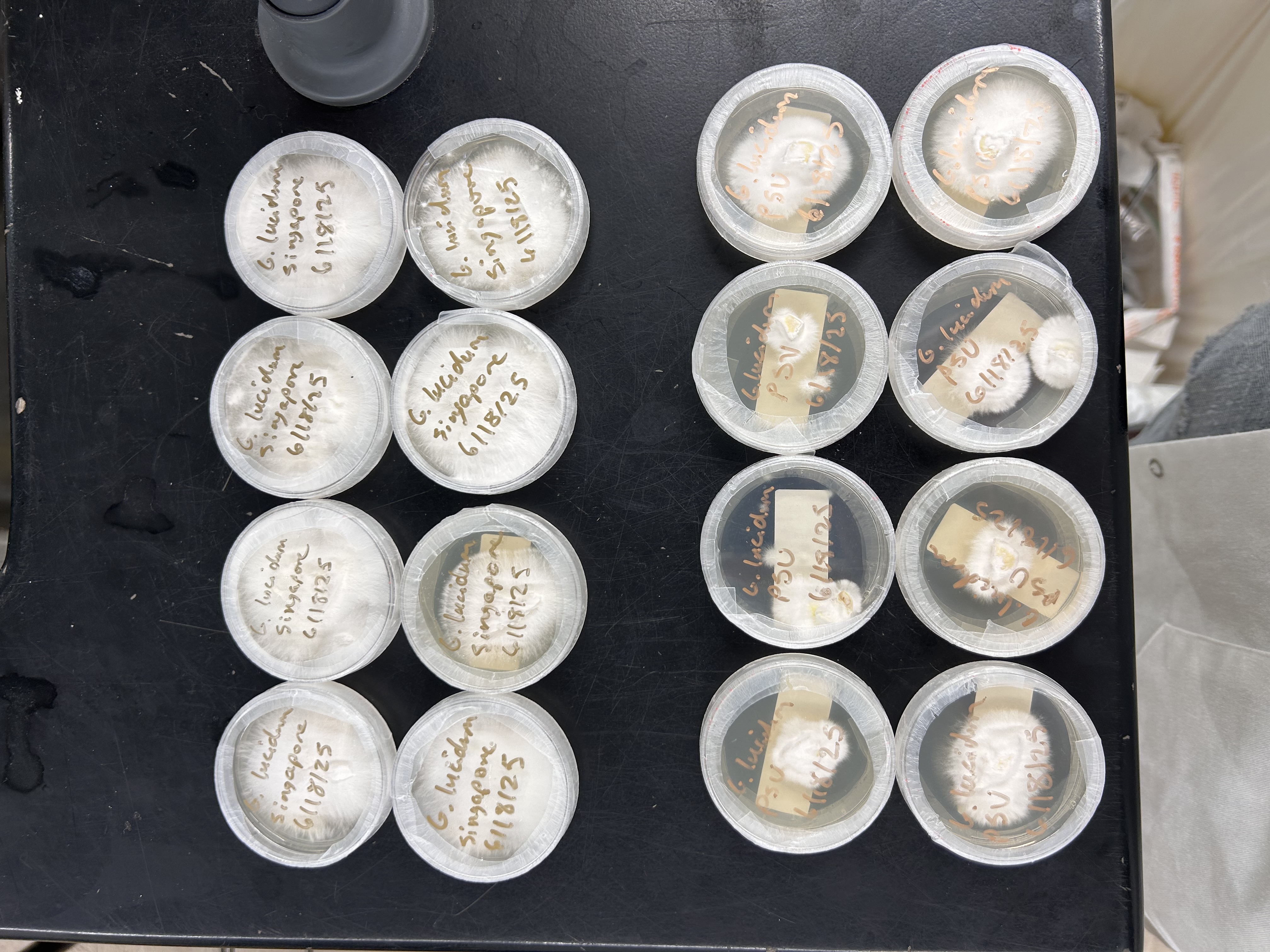For Environmental Studies senior Adam Frymier, summer 2025 was all about growth - both in the lab and in his own skills as a researcher. Under the mentorship of Britta Bielak, Assistant Professor of Interior Design in ľĂľĂÎçŇąĐßĐßÓ°ÔşĂâ·ŃąŰż´ State’s College of Architecture and Environmental Design, Frymier participated in the Summer Undergraduate Research Experience (SURE) program, focusing on an innovative use for fungi. Adam’s work was part of an Environmental Science and Design Research Institute (ESDRI) Seed Grant funded project “Substratum selection to reduce competitive species and improve material performance of structural mycelium-based composites,” lead by Bielak, alongside Sarah Eichler, PhD (Department of Biological Sciences), Gus Holman (Department of Biological Sciences), Michelle Bebber, PhD (Department of Anthropology ), and Metin Eren, PhD (Department of Anthropology). ESDRI prioritizes supporting SURE students working on Seed Grant funded projects.
“My research this past summer involved identifying an optimal strain of Reishi mushrooms based on minimum contamination and maximum mycelial growth,” Frymier explained. “The purpose of this culturing research is ultimately to utilize the mushroom mycelium (root-like structures) from the cultures as a sustainable building material, studied further by the architecture department here at ľĂľĂÎçŇąĐßĐßÓ°ÔşĂâ·ŃąŰż´.”
Working with living organisms came with unique learning curves. “The most interesting part of my research this summer was learning how to respond to organisms like mushrooms,” he said. “Unsurprisingly, learning how to listen to non-verbal and non-animal-like organisms had quite the learning curve. Due to contamination or abnormal growth patterns of the mushroom mycelium, I had to repeatedly check in on the cultures and figure out the best way to help them thrive. When a culture became contaminated, if caught early enough, I could usually isolate the healthy mycelium and transplant it to a better environment. If the mycelium exhibited abnormal growth patterns or began to suffocate itself in a liquid culture, I needed to quickly identify an optimal method for its support, ensuring sustainable growth.”
The work required patience, problem-solving, and plenty of contingency planning. “Doing research surrounding living organisms tends to always come with numerous challenges,” Frymier said. “Sometimes cultures wouldn't grow at all, or despite all preventative measures, a bacterial colony would wreak havoc on one of our agar plates or media jars. Nonetheless, with these challenges being known going into my research, I was able to plan extra time and resources accordingly to ensure viable results.”

Frymier also credits institutional backing for his success. “ESDRI's support was critical to my summer research and the larger research seed grant my team is working on,” he noted. “ESDRI has supported both projects, and we are very grateful for the opportunity to further our research with the fiscal and resource support provided by ESDRI.”
Through the SURE program, Frymier gained more than just data - he developed skills in observation, adaptability, and resource management, all while contributing to research that could lead to innovative sustainable building materials.

